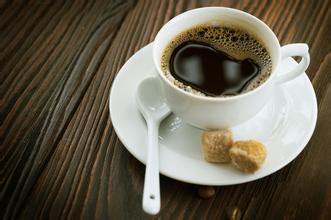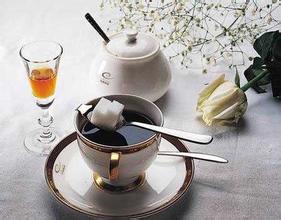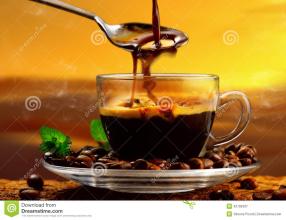Introduction of El Salvador Himalayan Coffee Grinding scale Variety Manor treatment
Flavor and quality of coffee
El Salvador is a producer of high-quality commercial Arabica beans and is famous for its strict and effective quality control.
Since 2003, he has joined the COE competition.
With excellent ancient coffee, successfully entered the boutique coffee market.
Coffee flavor is related to the microclimate of the producing area. On the whole, Salvadoran coffee inherits the mild quality of Central American coffee. It is soft, slightly sour and has beautiful sweetness, so it is suitable for blending.
Boutique Salvadoran coffee can also be impressive, including some pacamara varieties, which show active acidity, layered and deep taste, and a long finish.
Coffee organization
UCAFES:Organization of coffee producity cooperatives of el salvador, accounting for 25% of the total output
UCRAPROBEX:Organization of Land Reform Coffee Producing & Processing Cooperatives, including small farmers without land before the land reform, accounted for 10% of the total output.
ABECAFE:Association of millers and Coffee Exporters, including 99 processing plants and most exporters
The Association of Coffee Producers of El Salvador represents all coffee producers.
The above four coffee organizations, plus four national research institutes, constitute a coffee policy-making body--
The Salvadoran Coffee Association Consejo Salvadoreno del cafe (salvador coffee concil), which is involved in coffee promotion, data collection and international cooperation.
El Salvador boutique coffee is concentrated in the volcanic rock producing areas of Santa Ana in the west and Charantanan fruit in the northwest. In recent years, the top 10 cup tests are almost entirely from these two producing areas, with an altitude of about 9-1500 meters, mainly bourbon (68%). Followed by Pacas (29%), mixed-race Pakamara, Dulaai and Kaddura accounted for only 3%.
The coffee harvest lasts from November to March. The fresh fruit of coffee is picked by hand.
On the whole, Salvadoran coffee inherits the mild quality of Sino-American coffee, which is soft, slightly sour and has beautiful sweetness. At the same time, it also has its own characteristics: the aromatic taste is slightly sour and very soft; it is pure and has no miscellaneous flavor, and the taste balance is excellent; the smooth feeling like cream chocolate is impressive; the dense feeling of coffee in the mouth gives the coffee a deep taste and a long finish.
Savanna climate. The plain area belongs to the tropical rain forest climate and the mountain area belongs to the subtropical forest climate. The average annual temperature is 25-28 ℃. The annual precipitation is more than 1800 mm in mountain areas and about 1000 mm in coastal areas. The rainy season is from May to October.
Don't underestimate El Salvador's coffee production. In its heyday, it was once the fourth largest coffee producer in the world, but decades of civil war almost dragged down the coffee industry. fortunately, the war has stopped in recent years, and the coffee industry has come back to life. The only benefit that the civil war brought to the Salvadoran country was that the farmers' fields were barren and failed to catch up with the most popular Katimo exposure train in the past two decades, thus preserving the ancient varieties of bourbon and Tibica, that is to say, El Salvador still uses the most traditional shade planting, which is of positive significance to the aroma of coffee. In 2005, the Salvadoran mixed-race Pacamara boasted in coe, which confused many international cup testers and did not know how to score it. It was never expected that this hybrid bean not only broke the mellow boundary of coffee, but also expanded the visibility of Salvadoran coffee.

Important Notice :
前街咖啡 FrontStreet Coffee has moved to new addredd:
FrontStreet Coffee Address: 315,Donghua East Road,GuangZhou
Tel:020 38364473
- Prev

Introduction of varieties produced in Manor by Grinding scale method of Coffee beans in Honduras
The granules of coffee beans in Honduras are large in shape, uniform in size and glossy in color. In order to facilitate harvesting, farmers will prune the coffee trees to no more than 150 centimeters, because if they grow too high, they have to set up ladders to pick, which is not only time-consuming, but also may damage the trees by bending branches. As the ripening period of each fruit of the coffee bean is different, it is necessary to keep the coffee bean in good condition.
- Next

Costa Rican Saint Roman Coffee Flavor description characteristics production area treatment Variety Manor introduction
Costa Rica Saint Roman Coffee Flavor description characteristics production area treatment Variety Manor introduction name: Costa Rica Tara Pearl Costa Rica Tarrazu SHB country: Costa Rica production area: Tara Pearl Tarrazu Manor: jaguar Manor El Puma Estate Grade: SHB/EP treatment method: washing fermentation, later drying baking degree: medium roasting Costa Rica
Related
- Detailed explanation of Jadeite planting Land in Panamanian Jadeite Manor introduction to the grading system of Jadeite competitive bidding, Red bid, Green bid and Rose Summer
- Story of Coffee planting in Brenka region of Costa Rica Stonehenge Manor anaerobic heavy honey treatment of flavor mouth
- What's on the barrel of Blue Mountain Coffee beans?
- Can American coffee also pull flowers? How to use hot American style to pull out a good-looking pattern?
- Can you make a cold extract with coffee beans? What is the right proportion for cold-extracted coffee formula?
- Indonesian PWN Gold Mandrine Coffee Origin Features Flavor How to Chong? Mandolin coffee is American.
- A brief introduction to the flavor characteristics of Brazilian yellow bourbon coffee beans
- What is the effect of different water quality on the flavor of cold-extracted coffee? What kind of water is best for brewing coffee?
- Why do you think of Rose Summer whenever you mention Panamanian coffee?
- Introduction to the characteristics of authentic blue mountain coffee bean producing areas? What is the CIB Coffee Authority in Jamaica?

